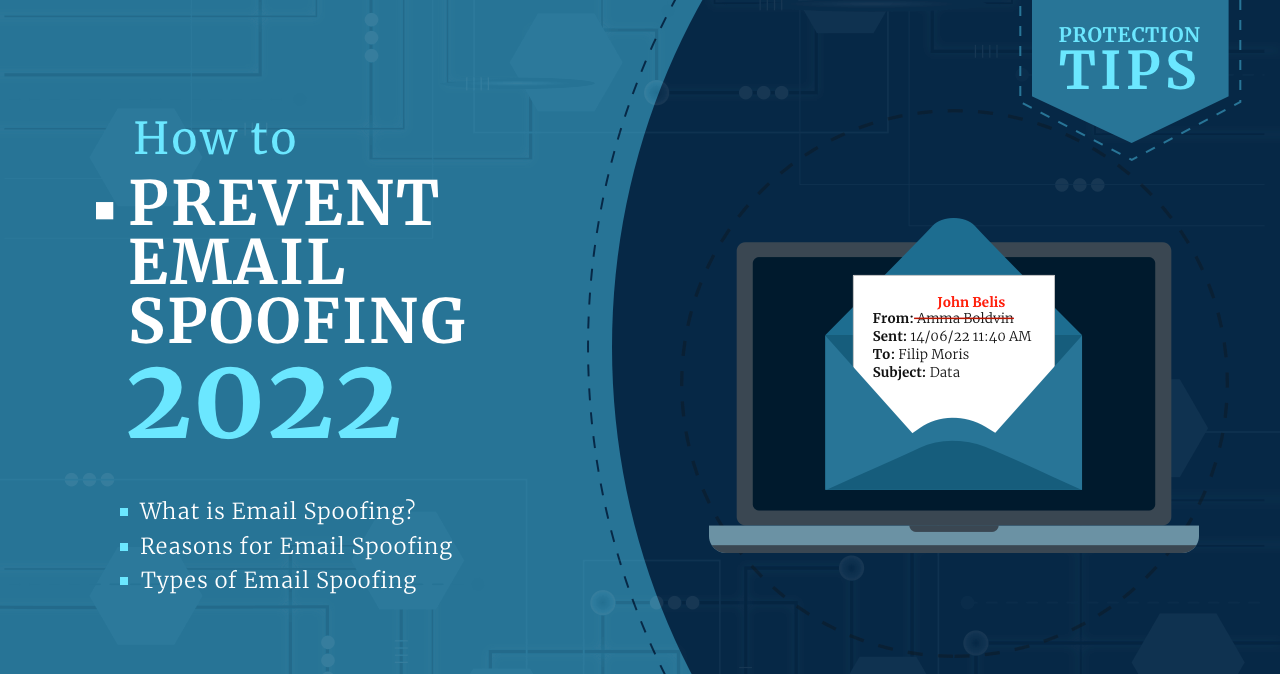Email Spoofing
Email spoofing or spoofing email is the forgery of the sender’s email addresses. The address specified in the sender’s string is often false; if you send a response to this address, it is likely to come from a third party. The purpose of this scam is precisely to deceive the user and not to be declassified.
Reasons for Email Spoofing
If you think that email spoofing is only to harm, you are wrong; sometimes, it is used for legitimate purposes. Companies that use external contractors for specific purposes, but at the same time, their replies should come from the company’s address. companies do not want to disclose the names of specific employees who correspond with customers on behalf of the company. It should also note that the complete change of the headers From and Reply to is changed for legitimate purposes. Malicious spoofing involves the following purposes:
- Spam: In this case, the attackers send their letters on behalf of famous companies, banks, and other organizations.
- Phishing: Here, fraudsters forge email addresses so that the composed letters convince the victim to go to a phishing resource and enter all personal or financial data.
- Compromising corporate mail: The attacker is disguised as a familiar person, for example, a partner, employee, friend, representative of the organization, etc. Then they try to get all the information they need about you, convince you to transfer money or give out the organization’s confidential information.
- Extortion: The attacker convinces the victim that he has hacked the user’s system or device and that the victim needs to pay a ransom to get it back. So the fraudster blackmails the user without foundation.
Types of Email Spoofing
Fraudsters use different ways to make a successful operation. Below we will present the most common methods of spoofing.
1.Sharing a similar domain
To successfully spoof, fraudsters carefully imitate the addresses of senders under the addresses familiar to your organizations, companies, and others. To do so, they shall take the following steps:
- replace the first level domain, for example, [email protected]
- replace the second-level domain for first-level national domains, for example, [email protected]
- replace the second-level domain with other characters or a letter, for example, [email protected]
- replace the second-level domain to cause an association with the company masquerading as an attacker, for example, [email protected]
- use the name of the company under which the fraudster is disguised as a mailbox. looks like this: [email protected]
2.Substitution of sender’s name
In this case, the sender’s name is falsified, and the From and Reply-To header contains the fraudster’s address. This method is often developed on mobile mail clients because they only have a default name.
As their name, fraudsters often use:
- The false terms of the company or organization that usage.
- Fake names with a phony email address.
3.Changes the significance of the From and Reply-to fields
Because the SMTP protocol does not authenticate headers, fraudsters can easily forge addresses in the From and Reply fields without being noticed. Thus, they have the privilege of not being caught, as a fake is almost no different from the original.
Protection from Email Spoofing
Malicious messages can get into your email for the most incomprehensible reasons, even if there is security. It means you should take the following steps to protect yourself from fraudsters.
Avoid strange attachments or unfamiliar links. If you received a suspicious email that you did not expect and it asks you to authenticate or click the link to confirm your identity or enter the data in the attached form-not, be kept. To make sure that this letter is from a legitimate organization, open the official website of the organization, log into your account and see if you have received a letter from there.
Recheck the contents of your email using your browser. It is clear that there is no need to be afraid of anything that comes to the post office, but checking all that you get will not be superfluous. If you are confused by the content of the email, copy it and paste it into the browser search bar. If this is a fraud, you will already see similar emails from other users complaining about this.
Don’t fall for the winnings. Pranks and gifts are another way to influence users. If you are sure you did not participate in any lottery, this is definitely not your win. It’s just a scam by a crook to compromise your data.
Use antimalware software. Antivirus software will help you prevent attacks from malware and fraudsters. It will scan everything on your device and remove all pests that have come to your device. Antimalware software will not be able to track messages from scammers, but the servers to which you can go through such a message, antimalware, will perfectly track and will not allow this infection to get on your device.
Use email security protocols. To reduce the flow of spam and threats, you must take care of security protocols. For example, some companies use SMTP, SPF, and DKIM mail to improve their security.

